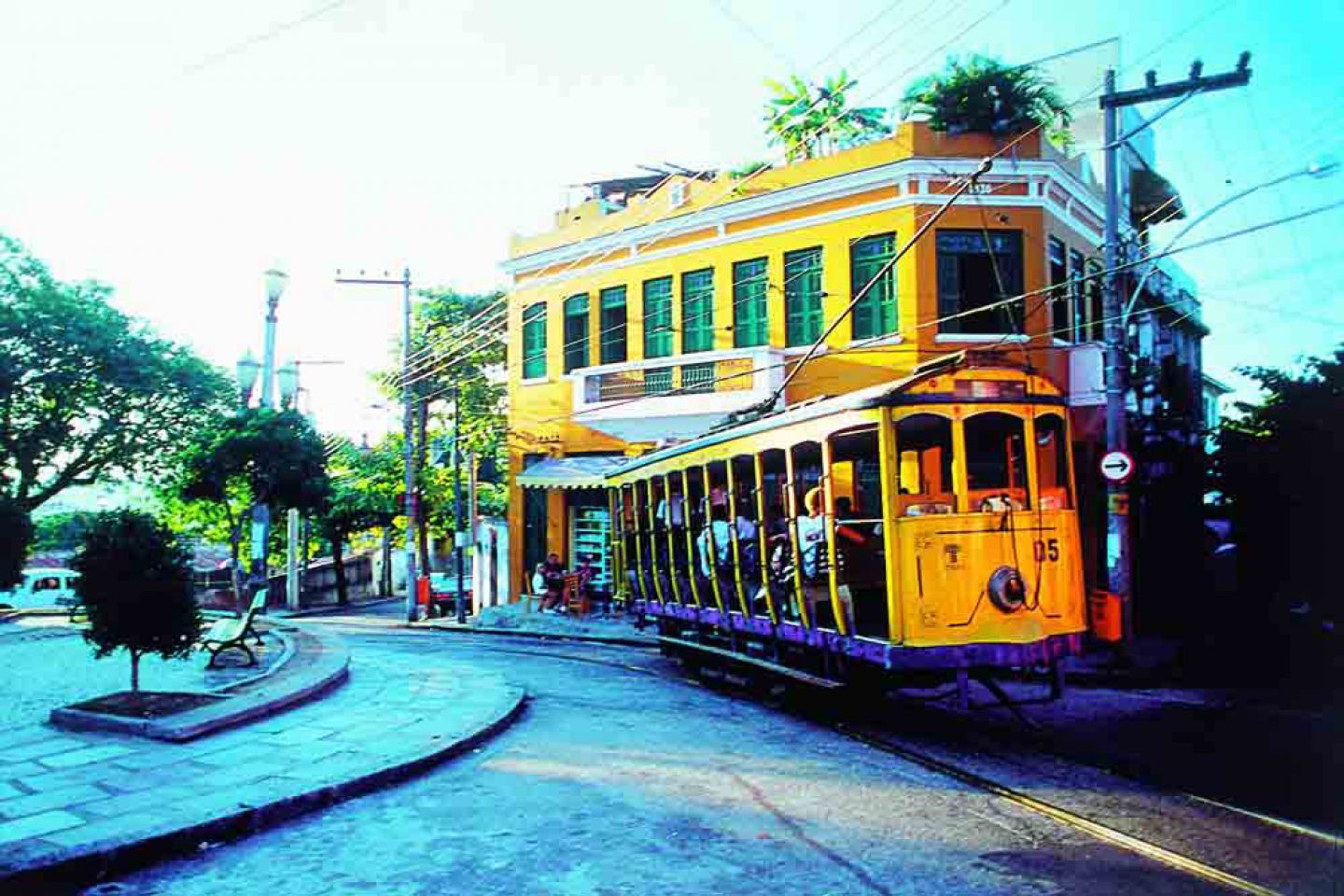Rio De Janeiro - Brazil
Jane Labous kicks back with a caipirinha and enjoys one of the world’s most beautiful cities, where golden crescent beaches lie between soaring mountains.
Travel Time 12hrs 10min
Jane Labous kicks back with a caipirinha and enjoys one of the world’s most beautiful cities, where golden crescent beaches lie between soaring mountains.
Travel Time 12hrs 10minFrom Pão de Açúcar – Sugarloaf Mountain – the whole city spans out beneath you. Go at sunset and you’ll see the outstretched arms of Christ the Redeemer lit up on Corcovado Mountain, the favelas (shanty towns) clinging to the mountainsides and the buttery curve of Copacabana Beach. Brazil’s most famous event, the hedonistic Carnival, kicks off every February – the explosion of dancing, outrageous costumes and music, and visitors from near and far, transform Rio from city to spectacle.
From the shapely cariocas (Rio dwellers), who strut along Ipanema’s seafront, to the lime caipirinhas served in every bar and beach cafe, this is a city with many pleasures. The view from Sugarloaf Mountain, so called because it rises 396 metres above the city harbour and resembles a loaf of concentrated sugar, makes you realise just how big Rio is. It’s a tapestry of hills and bays, islands and tunnels, dense tropical rainforest and flashy skyscrapers, dominated by the sheer, dark peaks of its mountains. There are 37 beaches in Rio, too, which explains why all locals are dedicated beach-lovers. They are also passionate about football – when the national team plays at the Maracanã stadium, it’s a display worth seeing. Many of the favelas are being cleaned up and now welcome tourists – you can take the original Favela Tour (favelatour.com.br) of Rocinha, which includes a pick-up/drop-off at your hotel. Oscar Niemeyer’s Museu de Arte Contemporânea sits along the shore of neighbouring Niterói, with a brilliant view across to Rio – the real attraction is the spaceship-like exterior, but the Brazilian art collection is worth a quick visit. No trip is complete without scaling Corcovado to Christ the Redeemer – you can’t really appreciate the scale of the 30-metre-high statue until you stand next to it, enjoying a view of the city and waters below.
The Copacabana Palace (0845 077 2222, copacabanapalace.com) is an extraordinary hotel set right on Copacabana Beach. Beloved of the glitterati, it has welcomed everyone from Fred Astaire and Ginger Rogers to Marilyn Monroe and Jean-Paul Sartre since it opened its art deco doors in 1923. La Suite (00 55 21 2484 1962, lasuiterio.com) is a boutique place overlooking the ocean on the other side of the city. The Hotel Porto Bay Rio Internacional (00 55 2125 468 000, portobay.com) in Copacabana has a rooftop terrace with a pool overlooking the bay, comfortable rooms, and an excellent breakfast spread.
If there’s one dish that typifies Brazilian cooking, it’s feijoada, a bean dish with air-dried beef, smoked sausage, tongue, pig’s ears, garlic and chilli. Fill a plate with white rice and spoon feijoada over the top, then sprinkle it with farofa (cassava flour) to thicken the sauce. It’s traditionally eaten on Wednesday or Saturday, but at the Casa da Feijoada (00 55 21 2247 2776, cozinhatipica.com.br) in Ipanema you can get it any day of the week. Churrasco (pieces of meat skewered onto a metal sword and roasted outdoors over hot coals) is another favourite. The national drink is cachaça, a spirit made from crushed sugar cane that is the main ingredient of the ubiquitous caipirinha. It’s also the base for batidas, a mix of cachaça and fresh fruit juices, much like an alcoholic smoothie. Head down to Lapa on a Friday or Saturday night and you’ll find the whole neighbourhood out until the early hours at the hundreds of street bars. Watch out for the delicious chicken and ham balls brought around on trays by the waitresses, and don’t forget to have a coxinha de frango (chicken ball) at least once while you’re in Rio – they’re delicious and very filling. Beach snacks are on another level, and vendors often wander by selling frozen, crushed acai, the Amazonian super fruit, iced tea and skewers of grilled white cheese.
Prainha and Macumba beaches are about half an hour from the centre – both are great for surfing.
Currency is the real (R$). Rio de Janeiro is a 12-hour flight from London and is two hours behind GMT between November and February, three hours between March and October.
Tap (flytap.com) flies to Rio de Janeiro from London Gatwick and Heathrow via Lisbon. Iberia (iberia.com) flies to Rio de Janeiro via Madrid.
Visit Brazil (visitbrazil.com) can provide information on getting to the city, as well as details on sightseeing and tours.
| Jan | Feb | Mar | Apr | May | Jun | Jul | Aug | Sep | Oct | Nov | Dec | |
|---|---|---|---|---|---|---|---|---|---|---|---|---|
| Min Temp | 24 | 25 | 24 | 23 | 21 | 20 | 19 | 19 | 20 | 21 | 22 | 23 |
| Max Temp | 30 | 31 | 30 | 29 | 26 | 26 | 25 | 25 | 26 | 27 | 28 | 30 |
| mm | 4 | 4 | 4 | 3 | 3 | 2 | 1 | 1 | 2 | 3 | 3 | 4 |
Subscribe and view full print editions online... Subscribe